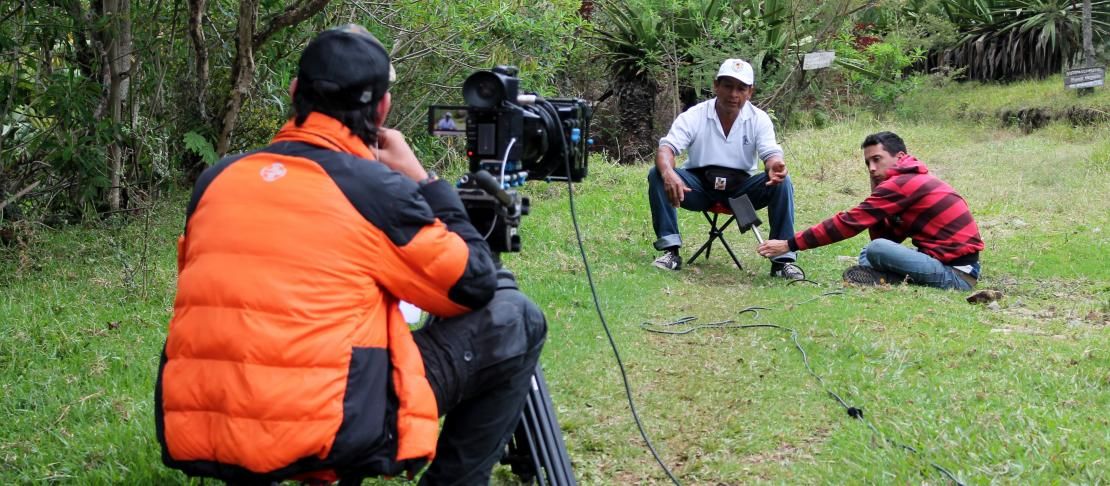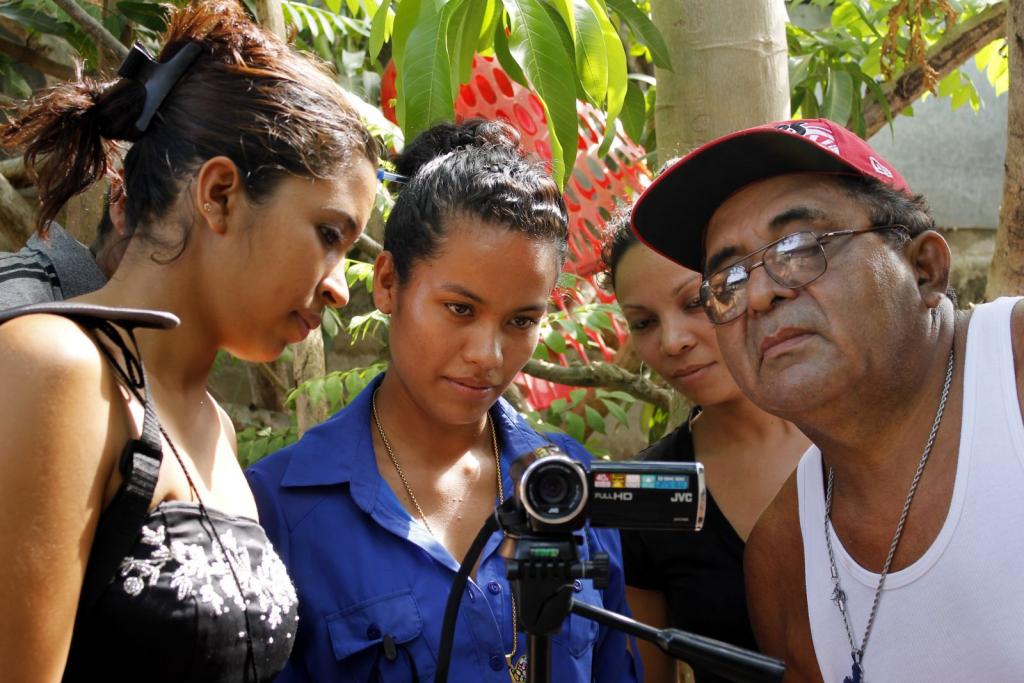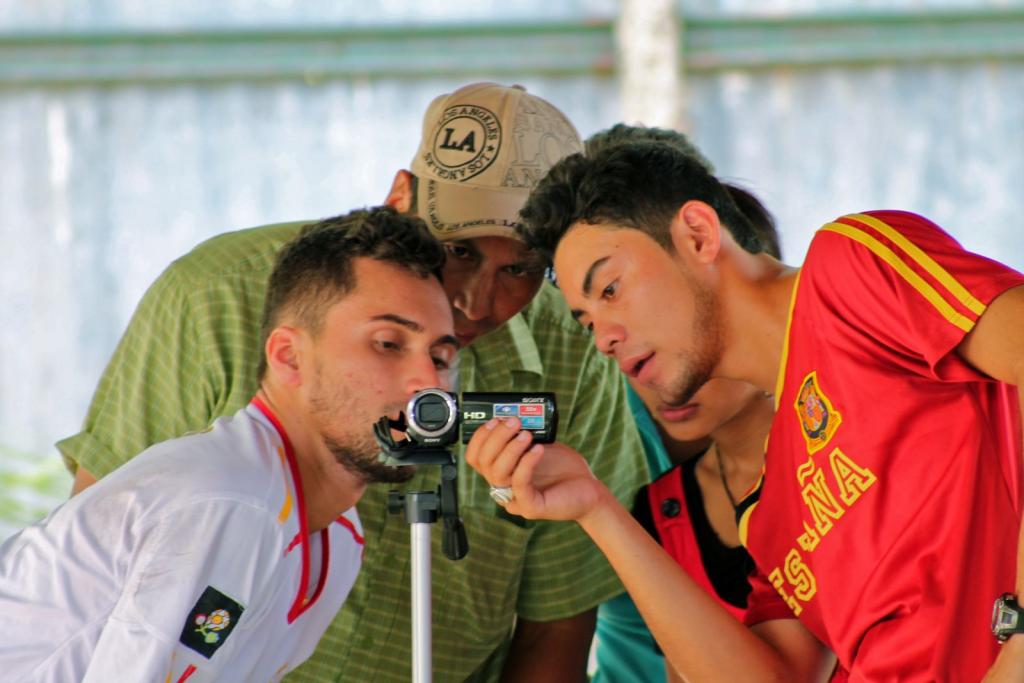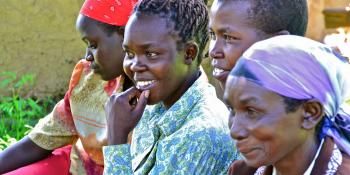Science for development: for all and from all

When a diverse group of women, men, and youth from rural communities learns how to use a video camera, writes their own story, interviews their community figureheads and neighbors and makes their own movie: What is happening behind the filmmaking?
Established by the United Nations Educational, Scientific and Cultural Organisation (UNESCO) in 2001, the World Science Day for Peace and Development (WSDPD) is celebrated on 10 November each year. This is a day to highlight UNESCO's mandate and commitment to science. However, peace and development cannot be addressed unless we use tools that include the voices of all who are involved.
Successful agricultural research for development (AR4D) should go beyond generation of quantitative research findings, and ensure these findings feed into context-relevant development interventions. An understanding of the context in which the research takes place is therefore essential for AR4D, and ought to include all groups that make up the research context in the process: include their voices, opinions, needs and ideas and look for ways to communicate these to a variety of audiences.
The CGIAR Research Program on Integrated Systems for the Humid Tropics (Humidtropics), in collaboration with the CGIAR Research Program on Climate Change, Agriculture and Food Security (CCAFS) and the International Center for Tropical Agriculture (CIAT) have been working together on the creation of an innovative and inclusive tool to include these voices: Participatory Video.
PV has proven to be an efficient tool in understanding local needs and customs. This picture shows the the equal participation of men and women during the PV project in Somotillo, Nicaragua. Photo: G. Betancourt (CIAT)
What is Participatory Video?
Participatory Video (PV) is a participatory research tool that involves members of a community in creating their own video message. It is an ideal method for sharing ideas and learning, encouraging marginalized groups to identify their own needs and implement their own forms of sustainable development.
The community learns to use video technology, write their own story, interview leaders and neighbors, and... tell their own story. The PV methodology collects indigenous knowledge on factors that impact the effectiveness of sustainable development interventions based on local needs.
View this animated video to see how we use PV in our projects.
From our experiences in Estelí and Somotillo, Nicaragua, PV has proven to be a powerful cross-cutting tool for knowledge sharing and inclusive agricultural research for development at community level. Through the invitation of marginalized groups to discuss relevant issues in their community we gain valuable insights into local needs, linked to participation, learning and innovation, gender and inter-generational dynamics, natural resources and income generation, and climate change mitigation and adaptation.
PV, an inclusive tool
A strong focus on inclusion means the community is accurately represented in regards to gender, age, ethnicity, and educational background. Learning a new skill sets the stage for empowerment and creative problem-solving, while creating spaces to generate strong outcomes linked to two main objectives: Identifying challenges for sustainable livelihoods, and empowerment of marginalized groups to take on these challenges.
Contributing to enabling development outcomes
The cross-cutting nature of PV contributes to the achievement of development outcomes, by effectively mainstreaming elements of innovation and gender and youth empowerment in AR4D design and implementation.
Innovation is strengthened by creating conditions for smallholder farmers, women, and youth to gain confidence in their abilities to succeed at new activities and improve existing local knowledge and practices. At the same time, gender and youth empowerment occurs by engaging marginalized groups in learning activities and encouraging them to voice their stories and opinions. This provides a non-threatening mechanism that improves gender and inter-generational relationships.
PV has shown to be a powerful contextual base to adequately adapt development strategies and policies to local needs, knowledge, and wants. Photo: G. Betancourt (CIAT)
PV is simple to replicate, disseminate, and track. Therefore, it can also serve as a versatile M&E tool throughout the various phases of research interventions, generating insights and feedback from specific target groups. This creates a strong sense of project ownership within the community and a more fertile ground for technology adoption and social change.
Exploring the potential of inclusive youth and gender components linked to innovation and transformation processes which stem from learning experiences at community level, PV provides a thorough understanding of the development challenges facing poor rural communities. This serves as a powerful contextual base to adequately adapt development strategies and policies to local needs, knowledge, and wants.
Learn more
Read working paper: "Local perspectives on climate change, Participatory Video in Somotillo, Nicaragua"
Read blog story: "Subjects of Change: participatory video for rural female empowerment in Nicaragua"
Watch: PV from Somotillo
Download: PowerPoint Presentation on the use of PV
Watch: PV from Estelí
For more information please contact us at m.j.koningstein@cgiar.org or s.v.azadegan@cgiar.org





